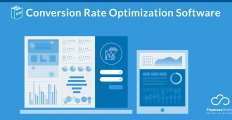
Credit: StockSnap
During the onset of the pandemic, the fear of COVID-19 transmission and physical distancing protocols sparked a wave of digital transformations that swept enterprises worldwide. Many of these transformations involved migrating information to the cloud, leading to a progressive increase in cloud spending. A report from Canalys revealed that global spending on cloud infrastructure in the second quarter of 2022 reached $62.3 billion, which represents a 33% year-over-year increase.
The cloud market growth was fueled by a wide variety of factors; at the fore were cloud solutions like data analytics, machine learning, app migration, data center consolidation, and cloud management software. Even though the onset of COVID-19 was two years ago, cloud software and infrastructure continue to add use cases across numerous industries globally. Meanwhile, Amazon Web Services and Microsoft accounted for the biggest share of cloud spending with 31% and 24%, respectively.
Things were looking up for the cloud software market through the rest of 2022 until the global inflation crisis caught up with it. With economies worldwide in flux, what once was a promising industry appears to be currently steeped in uncertainty.
Huge Cuts in Cloud Spending
According to a new report by Wanclouds, 81% of companies were directed by their C-suite to cut down on cloud spending or take no additional cloud-related costs in the third quarter of 2022. Breaking this down further, the survey indicates that 39% aim to maintain their cloud spending at the same level, 28% intend to slash the expenditures marginally, and 14% plan to drastically pull back on cloud expenses. Of those that are planning to cut costs, there is almost an even split between companies that intend to slash the budget by less than 25% and those that prefer a 25% to 50% reduction.
Meanwhile, only 10% of companies seek a marginal increase in cloud spending and 8% are looking to drastically increase cloud expenditures. This comes as a surprise since cloud solutions, based on global business needs, still have a high demand. However, the rising costs of goods stemming from high inflation and the fears of entering a recession have dampened plans to further pursue deeper levels of digital transformations.
As a result, 29% of IT leaders admit that they have sought the services of different cloud providers to cut down on costs. On the other hand, 22% elected to retain the services of their current providers but may go for a switch should they encounter a worthwhile cheaper alternative.
Based on recent cloud computing statistics, it is easy to pin the blame on the high cost of goods and the dwindling purchasing power of consumers due to inflation but the case of the cloud software market is more complex than this. There are other disruptive forces at play that have been exacerbated by inflation, and their impact appears to surpass that of high costs.
Cost Management Concerns
It’s one thing to hurdle high costs and it’s certainly another to deal with an influx of expenses that an organization failed to anticipate or prepare for. The latter is quite telling based on the Wanclouds report. As it turns out, 53% of organizations believe that they were battered by more unexpected cloud costs or spent more than their cloud allocations in the first half of this year. This is an alarming figure because spotty cost management has been present before this year’s period of high inflation; its effects, for some, only managed to turn heads due to the impact of today’s high prices.
Keeping track of the cloud’s now-massive coverage in modern-day operations has been a challenge for most enterprises, particularly those that work with hybrid and multi-cloud infrastructure. The latest figures reveal that only 55% of organizations have visibility into IT issues, 54% into security and incident responses, 51% into apps, 43% into costs and consumption, and a mere 27% into migrations.
This means that 57% of companies don’t have full visibility over their cloud spending, which often leads to overspending. Moreover, cloud migrations are quite expensive, and 73% of organizations are likely to miss some of the costs involved in the process. There’s also the case of security for which companies constantly invest in solutions to keep sensitive data safe. Furthermore, many enterprises leverage Kubernetes for various setups and have struggled in accounting for the expenses involved.
Even without inflation, these factors can make significant dents into an enterprise’s budget. In fact, research shows that 30% of cloud spending is often wasted.
Pressing Need for Cost-Visibility Tools
Most of the concerns laid out by the Wanclouds report boil down to the lack of cost management. Thankfully, the software market presents an array of solutions that grant business users access to the benefits of effective cost control and spend management: cloud cost management tools.
These platforms offer a granular approach to optimizing, monitoring, controlling, and measuring cloud costs. In addition, some systems have functionalities that help in waste reduction and architectural optimization. Equipped with analytics engines, these software solutions can also break down expenses, provide insights into the cash flow, highlight patterns in the data, and forecast expenditures over a set period.
Many cloud providers like Amazon, Microsoft, and Google have already anticipated the cost management concerns of business users, thus they have their own cloud cost management platforms on offer. Meanwhile, there are also stand-alone systems that perform just as well.
Using a top-tier solution ensures organizations of pinpoint cost allocation, optimized expenses from a single source, and configured costs for various parties and transactions, vastly improving the cost and consumption visibility of organizations. With this, companies can more comfortably bank on the high demand for cloud services without wasting funds while doing away with any cost-related uncertainty.




















Leave a comment!